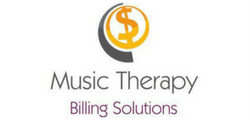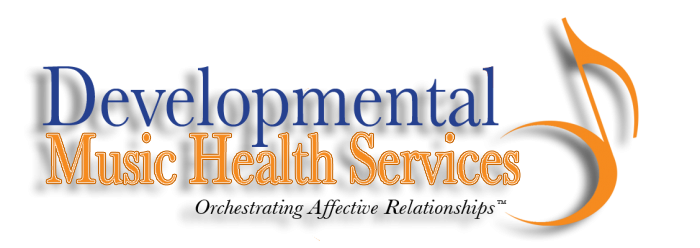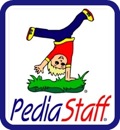I’m going to try something new. When people ask me “What is music therapy?”, I’ll say:
We use music to make your life better.
I’ve been reading a book called Made to Stick: Why Some Ideas Survive and Others Die (by Chip and Dan Heath). “Sticky ideas” are ones that last and that people remember. Fables and proverbs are great examples: Strike while the iron is hot. Pretty is as pretty does. The tortoise and the hare. The boy who cried wolf. These are all sticky ideas that have lasted years and across many cultures.

There are certain attributes and qualities sticky ideas have. The Heath brothers analyzed hundreds of them and described how we can make an idea stick in people’s minds.
I’m not finished, yet, but have been thinking about one of their main points–that we need to find the core message in what we communicate. The main, fundamental, core message.
I’ve heard this before–when you describe something, keep it simple, keep it concrete. That’s hard for me to do when I’m trying to describe music therapy. How do you address the nuances and complexities of what happens in a session? Much less how it’s different when working with a child with autism versus and patient in rehab. And to top it all off–I’m passionate about what I do! I love sharing it with others and really want them to understand it.
Hence my dilemma. I thought about it this weekend, though–about all the different populations we work with, the non-music goals we address, the various setting where we work–and really tried to get at the heart of what we do. The core message.
And I came up with this: We use music to make your life better.
Think about it. No matter the non-musical goal, our ultimate purpose is to make that person’s quality of life better. We help a stroke patient re-learn how to walk and talk again so they can lead as productive a life a possible. We help a child with autism learn how to talk so they can express their needs and tell a parent “I love you.” We help a hospitalized patient decrease their pain and anxiety so they fell better and can heal more quickly.
When we really get to the core of what we are doing, I believe we are trying to make life better…through music.
If you are interested in reading Made to Stick: Why Some Ideas Survive and Others Die, click on the title. Or, if you’re like me and prefer to listen to audiobooks, I recommend (and LOVE) .


 orcid.org/0000-0001-8665-1493
orcid.org/0000-0001-8665-1493






{ 8 comments… read them below or add one }
I love this, Kimberly. I always feel so technical explaining music therapy (multiple times a day) as “using music to address non-musical goals”. What you came up with is so simple, and yet all-encompassing. I have that book on my Audible wish list, by the way. Right now I’m listening to Getting Things Done (David Allen) and next up is Excuses Begone! (Wayne Dyer). I owe you big-time for turning me onto audiobooks 🙂
.-= Rachel´s last blog ..Happy Groundhog Day! =-.
Nice! Straightforward, easy, simple. We can stick it like post-it notes all over the world, in all of our settings. I enjoy getting deep into why music therapy works and why it’s so effective. THEN when I’m so caught up in the details and the research, it’s so refreshing to get basic again. Thanks for reminding me of the basics.
.-= Kat Fulton´s last blog ..Drum for your wellness. =-.
PS – Love the book recommendations, K & R! My current audio book is Love Undefended: all about nurturing the relationship you have with yourself 🙂 Be well
.-= Kat Fulton´s last blog ..Drum for your wellness. =-.
Great post Kim. And very timely for me (It’s like you can read my mind). The other day I had a phone interview with a local reporter. I was answering the standard music therapy questions and I could tell I was saying too much because he kept asking the same questions. All I could do was think – How do I give this guy a good sound byte? Thanks for the great resource to check out, it looks like it’s exactly what I need!
.-= Michelle Erfurt´s last blog ..Check This Out =-.
I think this is interesting and look forward to hearing how it works. I find that when I give a simple response such as that- I still get the, “but how?” And a lot of people who say “oh so you play relaxing music for people.” So, while I love this idea, I feel like it will only be your first sentence. BUT – I like it for a stick it purpose, so that after you explain how MT works, people may remember MT makes your life better. I usually tell people who say “why haven’t I ever heard of MT before?” I will respond “That’s actually probably a good thing because it means that there’s nothing wrong with you!” I usually get a chuckle and a better understanding….oddly.
I completely agree–there is always more that goes into the explanation when talking to someone. The purpose of this is to have a simple statement that encompasses the core of what we do. I usually also talk briefly about using music to help a stroke patient re-learn how to walk and talk or helping a child with autism learn to communication and play with others. ~Kimberly
I know! My “elevator definition” has changed so many times over the years. I’m excited to see how this one feels to me. ~Kimberly
Thanks for the book recs, Rachel and Kat! I have the GTD book on my list…now maybe have two more to add:D ~Kimberly
You must log in to post a comment.